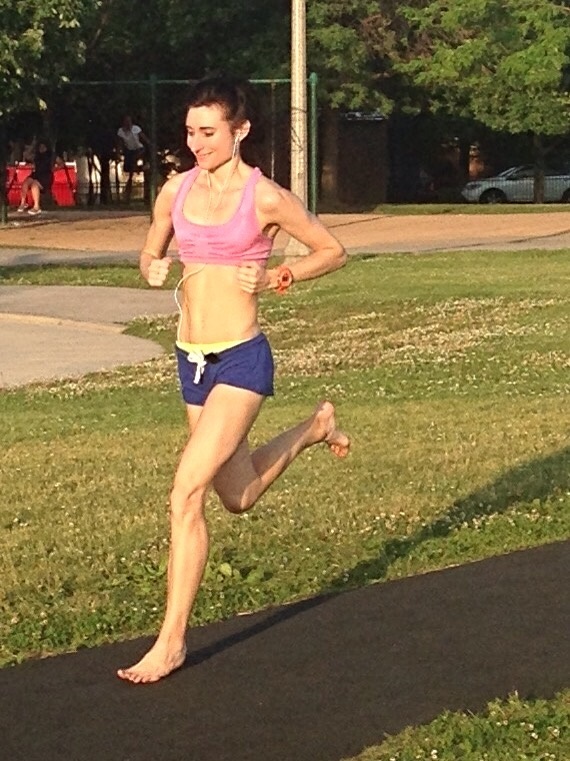Need more convincing that running barefoot isn’t bad? Well here is more back-up scientific ammunition.
Sneaking a bit of barefoot running into your marathon training is an easy way to give your biomechanics a boost. As one study explains that there’s no increase in abnormal foot-ankle motions when running barefoot as compared with running in shoes, suggesting that running barefoot does not create a harmful landing environment as compared with running shoes.

You’re No More Likely to Get Injured Running Barefoot Than Running in Shoes
Many runners think that running shoes are essential in preventing undesirable foot/ankle motions, like over-pronation, but the high injury rates among shod runners certainly challenges this belief. In fact, a study by Stacoff et al. found that running barefoot does not create an unstable landing environment and does not increase abnormal foot-ankle motions as compared with regular running shoes.
The researchers compared the effects of running barefoot vs running in regular running shoes on inside-out motions (eversion) of the foot-ankle complex. The researchers looked at the movements at the tibia (shin bone) and the calcaneus (heel bone) during th stance phase of running in runners who ran barefoot and in regular running shoes.
The researchers found that shin bone/heel bone movement patterns did not differ between the two conditions, that is, running barefoot did not prompt anymore unwanted lower legs movements as compared with running in shoes.
More Barefoot Bonuses
After running barefoot for a long period of time, many runners report less knee pain. Because the absence of compressible underfoot materials, running barefoot delivers a more sturdy landing environment, which may explain why it does not encourage wonky lower leg movements. What we also know about running barefoot is that it often changes your foot landing trajectory in that it encourages a forefoot strike, over a heel strike landing whereby a forefoot strike landing is one of the key strategies in avoiding injury during running.
From what I’ve read in the research, avoiding all types of thick cushioned running shoes slashes your risk of injury as compared with running in minimalist footwear or running barefoot. Going minimalist, or running barefoot, either way, strengthens the muscles needed to control pronation and strengthens the nerves in the lower leg joints, especially the cutenous nerves in the feet, which are essential for proper, quick reflexive actions of the leg during running –this is how the body naturally learns to land lighter and suggests why many barefoot runners have less loading on the hip joint, too.
More From Run Forefoot:
Health Benefits of the Vibram Five Fingers
How to Reduce Knee Pain When Running
References:
Stacoff et al. Tibiocalcaneal eversion in barefoot vs shod running. J Biomech, 1998; 3(1):13.
Bretta Riches
BSc Neurobiology; MSc Biomechanics candidate, ultra minimalist runner & founder of RunForefoot. I was a heel striker, always injured. I was inspired by the great Tirunesh Dibaba to try forefoot running. Now, I'm injury free. This is why I launched Run Forefoot, to advocate the health & performance benefits of forefoot running and to raise awareness on the dangers of heel striking, because the world needs to know.
Latest posts by Bretta Riches (see all)
- Heel Strike Running Causes Slipped Discs - 25/04/2024
- How to Train Yourself to Not Heel Strike When Running - 24/04/2024
- Cushioned Running Shoes Found to Be Bad for Ankles - 23/04/2024
